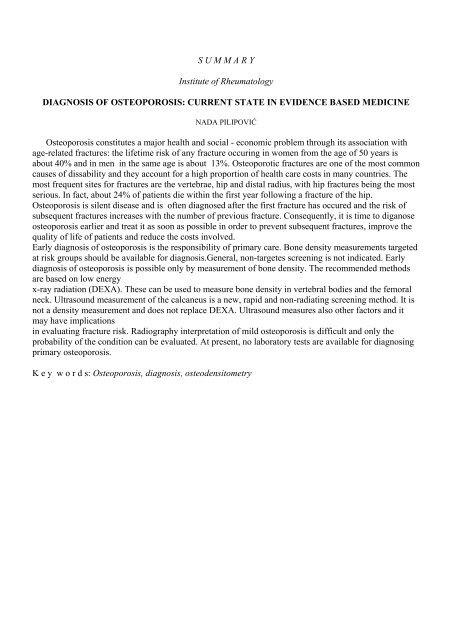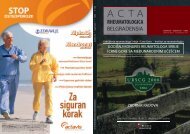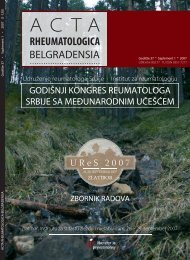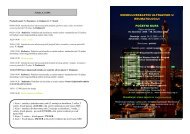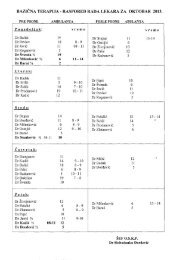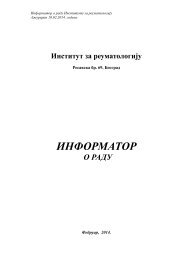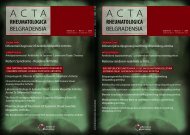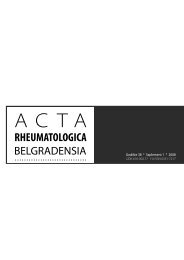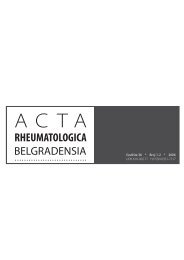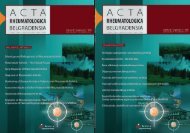Godište 35 supplement 2 - Institut za reumatologiju
Godište 35 supplement 2 - Institut za reumatologiju
Godište 35 supplement 2 - Institut za reumatologiju
You also want an ePaper? Increase the reach of your titles
YUMPU automatically turns print PDFs into web optimized ePapers that Google loves.
S U M M A R Y<br />
<strong>Institut</strong>e of Rheumatology<br />
DIAGNOSIS OF OSTEOPOROSIS: CURRENT STATE IN EVIDENCE BASED MEDICINE<br />
NADA PILIPOVIĆ<br />
Osteoporosis constitutes a major health and social - economic problem through its association with<br />
age-related fractures: the lifetime risk of any fracture occuring in women from the age of 50 years is<br />
about 40% and in men in the same age is about 13%. Osteoporotic fractures are one of the most common<br />
causes of dissability and they account for a high proportion of health care costs in many countries. The<br />
most frequent sites for fractures are the vertebrae, hip and distal radius, with hip fractures being the most<br />
serious. In fact, about 24% of patients die within the first year following a fracture of the hip.<br />
Osteoporosis is silent disease and is often diagnosed after the first fracture has occured and the risk of<br />
subsequent fractures increases with the number of previous fracture. Consequently, it is time to diganose<br />
osteoporosis earlier and treat it as soon as possible in order to prevent subsequent fractures, improve the<br />
quality of life of patients and reduce the costs involved.<br />
Early diagnosis of osteoporosis is the responsibility of primary care. Bone density measurements targeted<br />
at risk groups should be available for diagnosis.General, non-targetes screening is not indicated. Early<br />
diagnosis of osteoporosis is possible only by measurement of bone density. The recommended methods<br />
are based on low energy<br />
x-ray radiation (DEXA). These can be used to measure bone density in vertebral bodies and the femoral<br />
neck. Ultrasound measurement of the calcaneus is a new, rapid and non-radiating screening method. It is<br />
not a density measurement and does not replace DEXA. Ultrasound measures also other factors and it<br />
may have implications<br />
in evaluating fracture risk. Radiography interpretation of mild osteoporosis is difficult and only the<br />
probability of the condition can be evaluated. At present, no laboratory tests are available for diagnosing<br />
primary osteoporosis.<br />
K e y w o r d s: Osteoporosis, diagnosis, osteodensitometry


